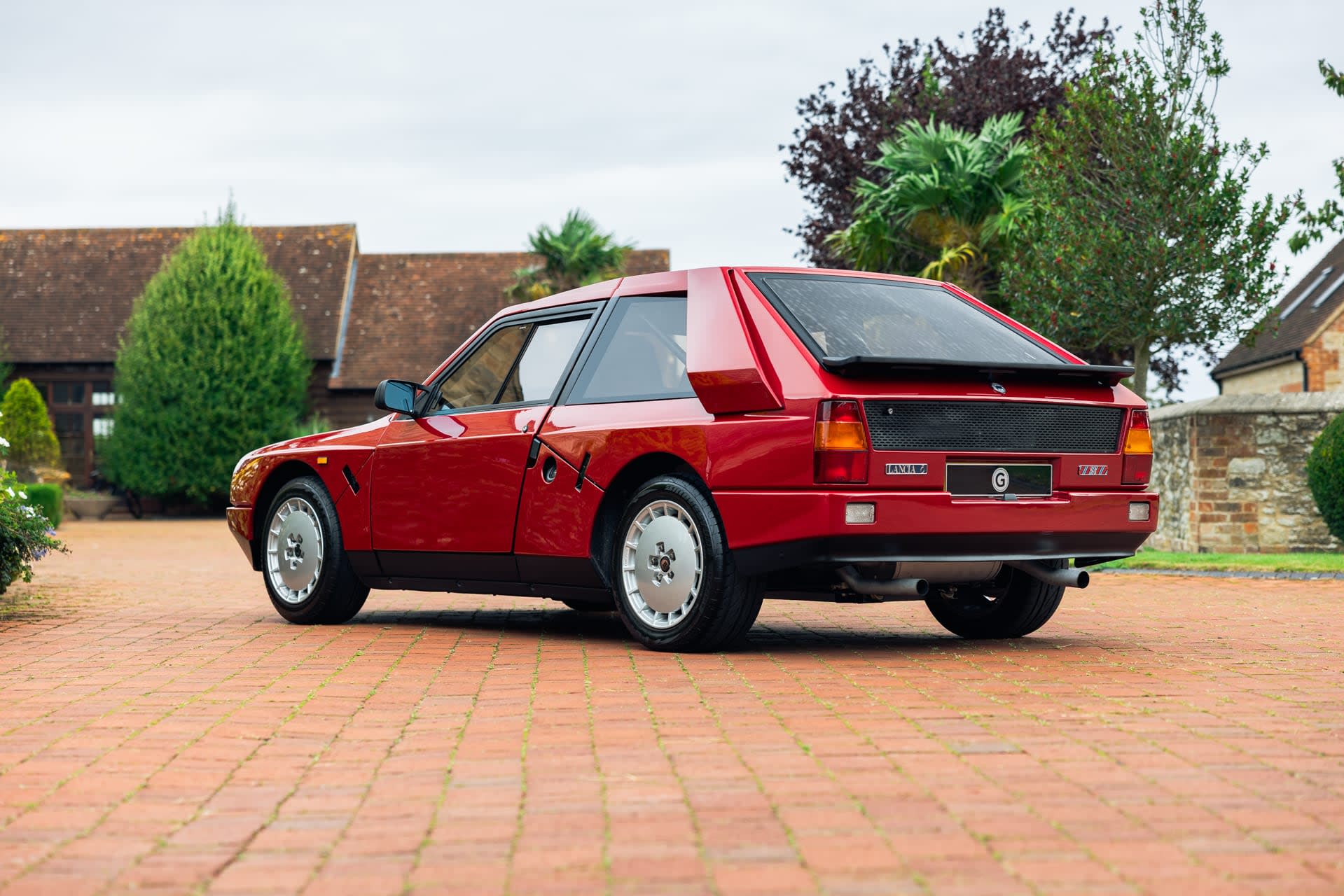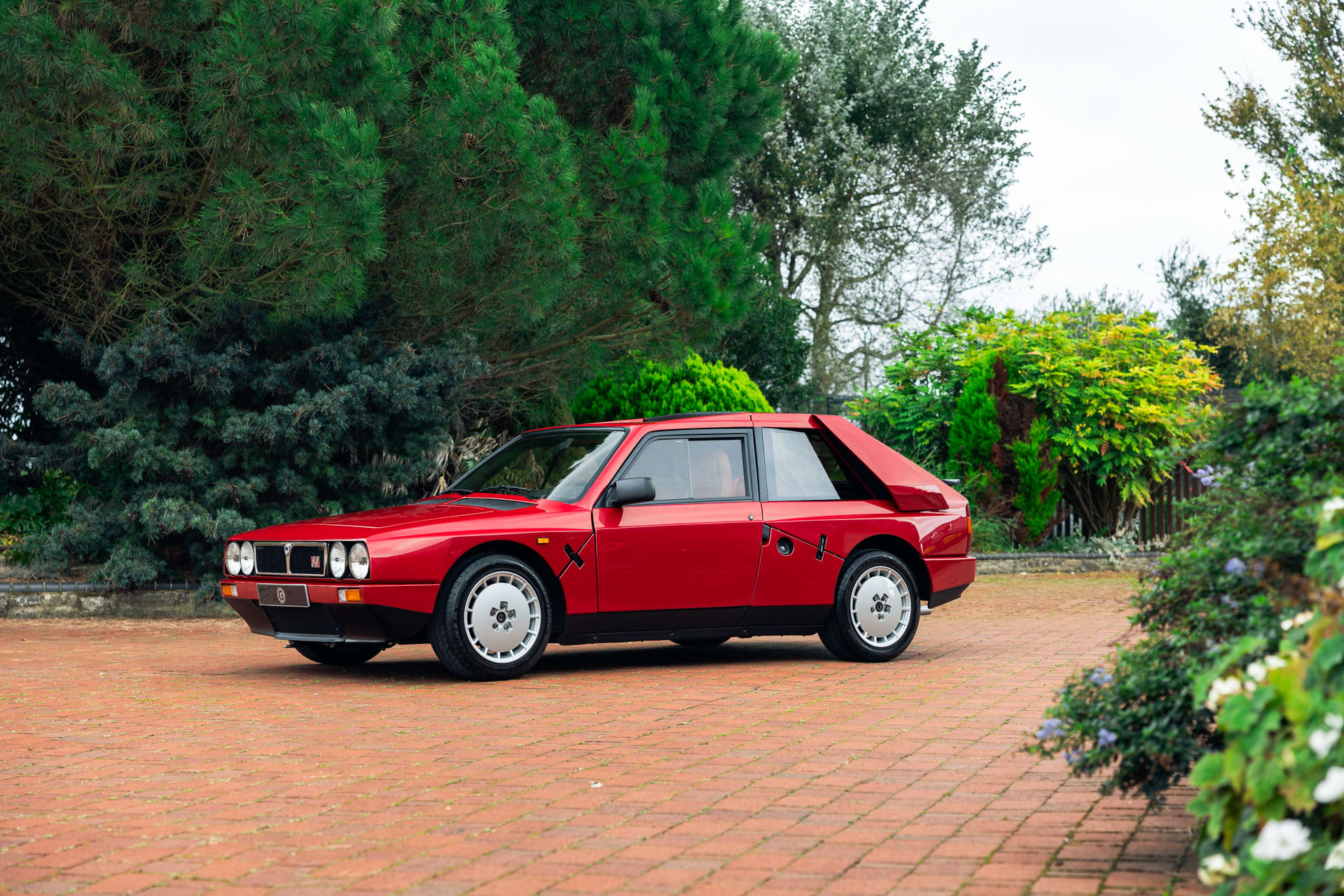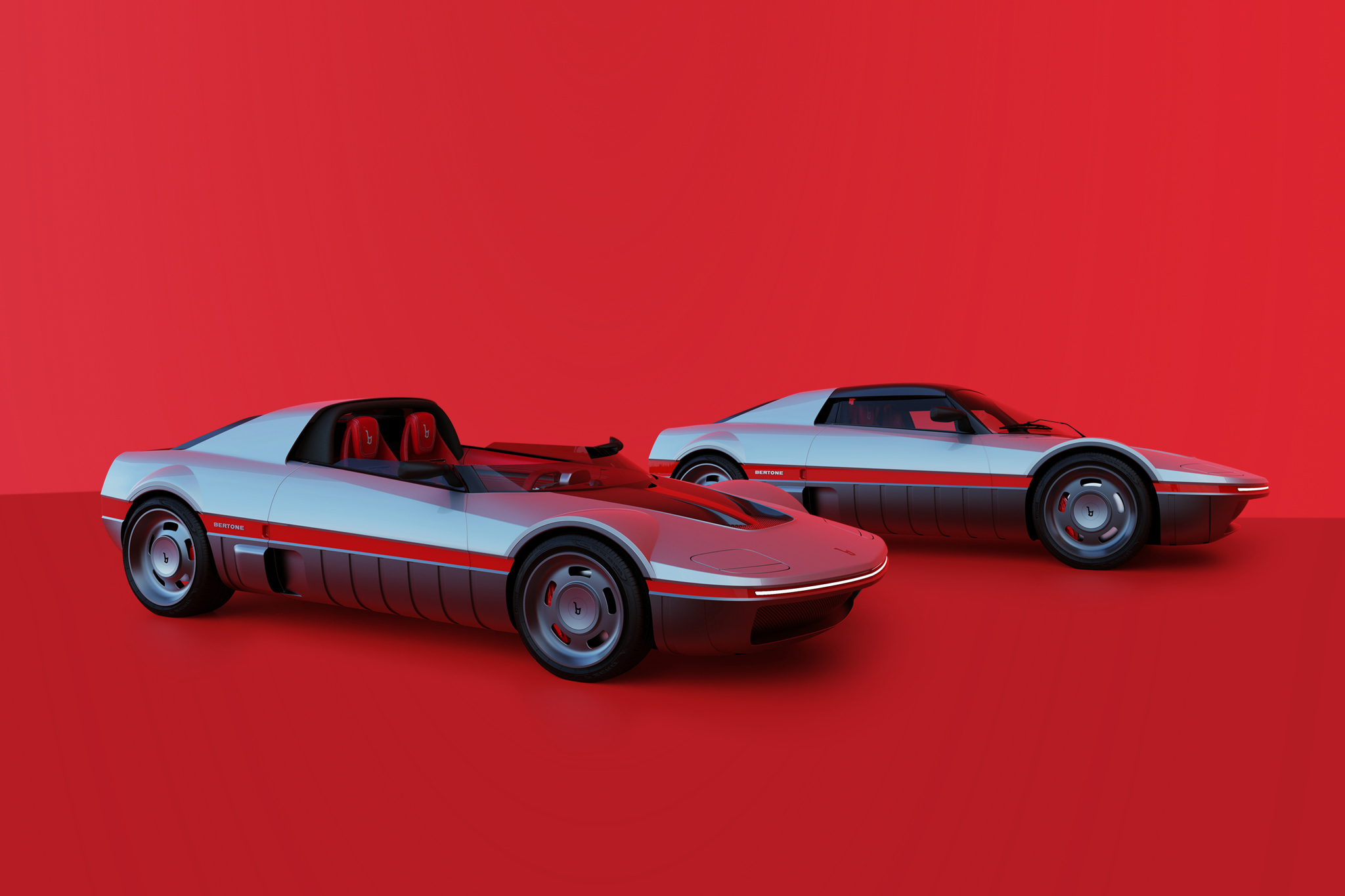Charged twice – Lancia Delta S4 Stradale
What do you do if the competition in motorsport gains the upper hand with a new technology? Either you protest to the rule-makers and get it banned or you adapt your own equipment accordingly. Lancia chose the second option in the 1980s. Back then, the wild Group B cars caused a stir in the World Rally Championship. And although Lancia had decades of experience in rallying, the Italians had completely missed out on a trend. This trend had been introduced by a brand that was still relatively unknown in motorsport at the time: Audi. These were powerful vehicles with all-wheel drive. The Ingolstadt-based manufacturer combined this possibility of achieving more propulsion on any surface with a turbocharged engine. Lancia, on the other hand, built a rear-wheel drive vehicle with the 037 Rally.
Engine with supercharger and turbo
In fact, the Italian works team was initially able to achieve great success with the 037 painted in Martini colours. In 1983, it even won the world championship title. At the same time, however, it became clear that only all-wheel drive cars would be competitive in the future. In co-operation with Abarth, Lancia therefore set about developing a new car. As with the 037, a tubular frame provided rigidity. All body parts were made of plastic. In this way, the silhouette of the Delta could be modelled on the one hand, but large hatches could also be integrated to make servicing easier. Quick-release fasteners in front of and behind the doors keep these “clamshells” in place while driving.


In contrast to the normal Delta, the engine moved behind the two passengers. In order to stand a chance against Audi and the other competitors, Lancia not only used a turbocharger, but also a supercharger to boost the engine. Volkswagen took up this “twincharge” technology again in the Golf V.
0 to 100 km/h in 2.4 seconds – on gravel
In order to be allowed to use the new Delta S4 in rallying, Lancia had to produce a road version for homologation. The regulations stipulated at least 200 units. The first vehicles rolled out of the halls of coachbuilder Savio in Turin in autumn 1985. The 1.8-litre four-cylinder engine in the Stradale (Italian for road) only produced 250 hp. This was only because the rally version was estimated to have at least 480 hp from the outset. With the rally car, car testers recorded an acceleration time from standstill to 100 km/h in 2.4 seconds – on a loose surface! As a Stradale, the officially stated value was six seconds and the top speed was 225 km/h. There was also an extensive range of standard equipment that you would not expect to find in a rally homologation car. In addition to Alcantara, it also included power steering, a trip computer and air conditioning.

Lancia won the World Rally Championship with the Delta S4 virtually from a standing start. At the end of 1985, the car won the RAC Rally in Great Britain with Henri Toivonen at the wheel. The following year, Lancia was in first place in the drivers’ championship until two weeks after the end of the season. The FIA then cancelled the points awarded to the brand and driver Markku Alén for the victory in San Remo due to incorrect scrutineering by the race organisers there. In addition, Henri Toivonen’s fatal accident in Corsica contributed to the end of Group B. From 1987, the Delta S4 could only be used in rallycross events. Although Lancia had presented the planned successor to Group S, which never materialised, at the 1986 Bologna Motor Show as the ECV, it could only be rolled into the museum. Meanwhile, production of the Stradale was officially still running, but was also stopped due to the cancellation of the Group B. Presumably, no more than 100 examples of the Delta S4 Stradale were built. This S4 Stradale is currently for sale at Girardo & Co.



Photos & car by:





